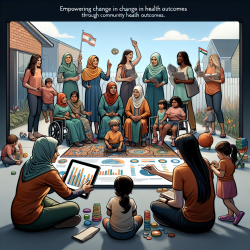Understanding Childhood Bereavement in a Global Context
Childhood bereavement (CB) is a profound experience that can significantly impact an individual's developmental trajectory and overall well-being. The recent study titled "Childhood Bereavement, Adverse and Positive Childhood Experiences, and Flourishing among Chinese Young Adults" provides valuable insights into how CB, along with adverse childhood experiences (ACEs) and positive childhood experiences (PCEs), influences adult flourishing. This research is crucial for practitioners who work with bereaved children, as it highlights the importance of a comprehensive approach to support and intervention.
The Research Findings
The study, conducted among 9,468 Chinese young adults, revealed that 4.3% of participants experienced CB. These individuals reported significantly higher ACEs and lower PCEs compared to their non-bereaved peers. The odds of experiencing various forms of abuse and household dysfunction were notably higher for bereaved individuals. Furthermore, CB was associated with lower levels of adult flourishing, as measured by the Flourishing Index and Secure Flourishing Index.
Implications for Practitioners
For practitioners, these findings underscore the need for a dual focus on mitigating ACEs and promoting PCEs. Here are some actionable strategies:
- Screening for ACEs: Regular screening for ACEs in healthcare and educational settings can help identify at-risk individuals early and connect them with necessary support services.
- Promoting PCEs: Encourage environments that foster strong parent-child relationships, community support, and a sense of safety and belonging.
- Grief Counseling: Implement grief counseling programs that not only address the emotional aspects of bereavement but also work to enhance resilience and flourishing.
Encouraging Further Research
While this study provides a comprehensive overview of CB in the context of Chinese culture, it also highlights the need for further research. Practitioners are encouraged to explore the following areas:
- Cultural Contexts: Investigate how CB and its impacts vary across different cultural settings to develop culturally sensitive interventions.
- Longitudinal Studies: Conduct longitudinal research to understand the long-term effects of CB and the interplay of ACEs and PCEs over time.
- Intervention Efficacy: Evaluate the effectiveness of existing grief counseling and support programs to identify best practices and areas for improvement.
Conclusion
The study on childhood bereavement among Chinese young adults provides crucial insights into the complex interplay of adverse and positive childhood experiences. For practitioners, understanding these dynamics is essential to developing effective interventions that promote resilience and flourishing. By focusing on both reducing ACEs and enhancing PCEs, practitioners can better support bereaved individuals on their journey to well-being.
To read the original research paper, please follow this link: Childhood Bereavement, Adverse and Positive Childhood Experiences, and Flourishing among Chinese Young Adults.










